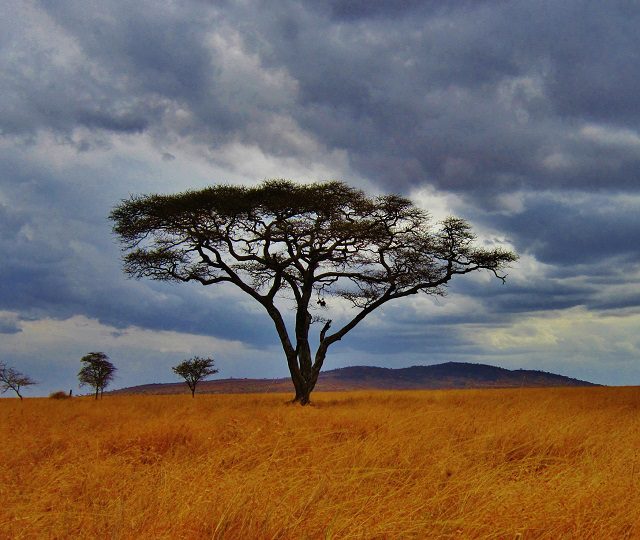
I am drawing much of the following information from archaeologist and evangelical Protestant James K. Hoffmeier, from his book, Ancient Israel in Sinai: The Evidence for the Authenticity of the Wilderness Tradition (New York, Oxford: Oxford University Press, 2005).
Exodus 25:10, 13 (RSV) “They shall make an ark of acacia wood; two cubits and a half shall be its length, a cubit and a half its breadth, and a cubit and a half its height. . . . [13] You shall make poles of acacia wood, and overlay them with gold.
Exodus 26:15, 26, 32 “And you shall make upright frames for the tabernacle of acacia wood. . . . [26] “And you shall make bars of acacia wood, five for the frames of the one side of the tabernacle, . . . [32] and you shall hang it upon four pillars of acacia overlaid with gold, with hooks of gold, upon four bases of silver.
Exodus 27:1 “You shall make the altar of acacia wood, five cubits long and five cubits broad; the altar shall be square, and its height shall be three cubits.
Deuteronomy 10:3 So I made an ark of acacia wood, and hewed two tables of stone like the first, and went up the mountain with the two tables in my hand.
There are many skeptical, so called “biblical minimalist” archaeologists and historians who claim that the Israelites were never held in bondage in Egypt in the second millennium BC. Consequently, they also deny their wilderness wanderings in the Sinai Peninsula. So, for example, a 2007 New York Times article reports that Egypt’s “chief” archaeologist, Zahi Hawass, stated as regards the Exodus and subsequent Sinai wanderings: “Really, it’s a myth . . . Sometimes as archaeologists we have to say that never happened because there is no historical evidence . . .”
Dr. Hoffmeier devoted an entire book (see above), published by Oxford University Press, defending the notion that the Exodus was a real event, and that the Israelites who fled Egypt sojourned in the Sinai Peninsula for an extended period of time, developing their religious rites and laws in so doing: including the Ten Commandments and the entire Law of Moses, the ark of the covenant, and the tabernacle (essentially a portable temple): as explicated in the Pentateuch or Torah (first five books of the Old Testament).
One of the evidences for this extended stay in the Sinai desert is the divinely commanded use of acacia wood in constructing the ark, the altar, and the tabernacle. This suggests a Sinai connection, as I will shortly demonstrate. Hoffmeier writes:
One of the few types of trees found in dry climates such as the Negev, the Arabah, and Sinai suitable for making wooden furniture and instruments is the acacia . . .
Given the prominence of these trees in Sinai, it is not surprising, then, that acacia is the principal word used in the construction of the tabernacle . . . the ark of the covenant . . . the altar . . .
The facts that sittim [acacia] is a word of Egyptian origin and that this tree provides the only suitable wood for construction use, lend authenticity [to] this element of the wilderness tradition. (p. 209)
A Jewish tourism page devoted to acacia notes: “In large areas of the desert lands of the Negev and Sinai, acacia trees are the only trees.”
Palm trees are prevalent in Sinai, but a Gardenine web page on palm tree wood informs us:
Palm tree wood is not very strong because the plant is technically not a woody tree. It is neither a hardwood nor a softwood, but it can be burned as firewood and used for making wicker furniture. . . . Technically, palm trees do not have wood because the trunk consists of fibrous material that does not have the strength of normal wood.
Tamarisk, a deciduous shrub (small tree) originated in Sinai and was prevalent there. But it’s different from acacia in an important way. An article devoted to desert trees noted:
Like the acacia, the tamarisk is a larger tree, but unlike the former, it does not grow on its own in the desert. This desert tree requires some minor cultivation in order to survive. . . . this cultivated tree takes three generations to grow to its full size.
It follows, then, that if indeed the Jews were wandering nomads in the Sinai Peninsula after the Exodus, and needed some wood, tamarisk wouldn’t fit the bill because it doesn’t grow on its own, and they didn’t have time to plant and cultivate it, and palm trees are not true wood at all. It made much more sense to utilize the acacia tree that was already there for the taking.
It appears to be the case that acacia is the wood of choice if one is in Sinai and wants to construct wooden furniture. Somehow, the Bible (and/or Moses) got that right. And it’s just one of a thousand little facts that suggest its accuracy in matters large and small.
But sure enough, skepticism exists on this point. The world is “blessed” with mosquitoes and Bible skeptics. Ziony Zevit wrote an article, “Timber for the Tabernacle: Text, Tradition, and Realia“ (Eretz-Israel 12 [1992], 137-143). Hoffmeier describes Zevit’s position:
Most kinds of acacia are short and tend to be twisted, and do not provide suitable planks or long pieces of wood. Those that commonly grow in Sinai today are of this variety. In order to produce planks or poles to construct ten-cubit-high poles needed for the tabernacle (cf. Exod. 26:26), Zevit reasons, the species Acacia albida — because of its height — would be required to produce this length. This species, however, is not found in Sinai but is found in the land of Israel north of the Negev. This circumstance leads Zevit to ask, “given the details of the blueprints [of the tabernacle], why did the literary architect insist that the framing of the tabernacle be accomplished with a commodity not available in Sinai?” His answer is that the author “was unfamiliar with the realia of Sinai.” He continues that the tabernacle tradition reflects the milieu of northern Israel where the Acacia albida was available, and then rashly concludes that “no historicity can be assigned to the tabernacle as described in Exodus as a structure constricted by any group in Sinai.” (pp. 209-210)
Hoffmeier then offers a refutation of Zevit’s conclusions:
[H]e assumes that the ten-cubit-high frames required ten-cubit-long planks (ca. five meters or sixteen feet), thus requiring a type of tree not present in Sinai. . . . From earliest times, the Egyptians had mastered making wooden boats, shrines, and coffins of shorter pieces of wood. . . . Furthermore, laminating woods was known in Egypt, as the composite bows of Tutankhamun illustrate. . . .
Zevit assumes that only the species of acacia present in Sinai today were available thousands of years ago, and that those in northern Israel now were standing in the second millennium [BC]. It is widely believed that there has been considerable deforestation of ancient Palestine. . . . In 2005 a team form Boston University and the University of Naples discovered dismantled Middle Kingdom ships . . . To the surprise of the archaeologists, one [of] the boats was made of acacia (the others were cedar which is expected), with planks as long as 3.7 m (12′ 1″). Clearly, a variety of taller acacia did grow around the Red Sea in Egypt and Sinai in ancient times, which has not survived to our time. (p. 211)
As to deforestation of the Sinai, a 2021 article in The Guardian stated:
[I]n the past 5,000 years, human activity has reduced the Earth’s total biomass by an estimated 50%, and destroyed or degraded 70% of the world’s forests. . . .
There is evidence that the Sinai once was green – as recently as 4,500 to 8,000 years ago. Cave paintings found there depict trees and plants. Records in the 1,500-year-old Saint Catherine’s monastery, near Mount Sinai, tally harvests of wood. . . .
What turned the Sinai into a desert was, most likely, human activity. Wherever they settle, humans tend to chop down trees and clear land. This loss of vegetation affects the land’s ability to retain moisture. Grazing animals trample and consume plants when they try to grow back. The soil loses its structure and is washed away . . .
Acacia was the wood of choice in Sinai; almost the only choice at all, and so we conclude that the Bible is reflecting an accurate picture of conditions there during the time of Moses (13th century BC). These accounts (from all that we can determine) were not originally conceived (orally) and/or written down 800, 900, a thousand years or so later than what has been traditionally believed by Jews and Christians.
The myths and fantasies here (if we must say that they exist) are present in the heads of skeptical archaeologists, who are much more concerned with preconceived highly theoretical and subjective notions than with the actual historical facts that can be scientifically and objectively ascertained via archaeology and other sciences.
***
Photo credit: Michelleraponi (3-1-14): acacia tree in Tanzania, Africa [Pixabay /Pixabay License]
***
Summary: Drawing from archaeologist James K. Hoffmeier, I contend that the use of acacia in building the ark of the covenant & tabernacle confirms biblical accuracy re the Israelites in Sinai.
***













